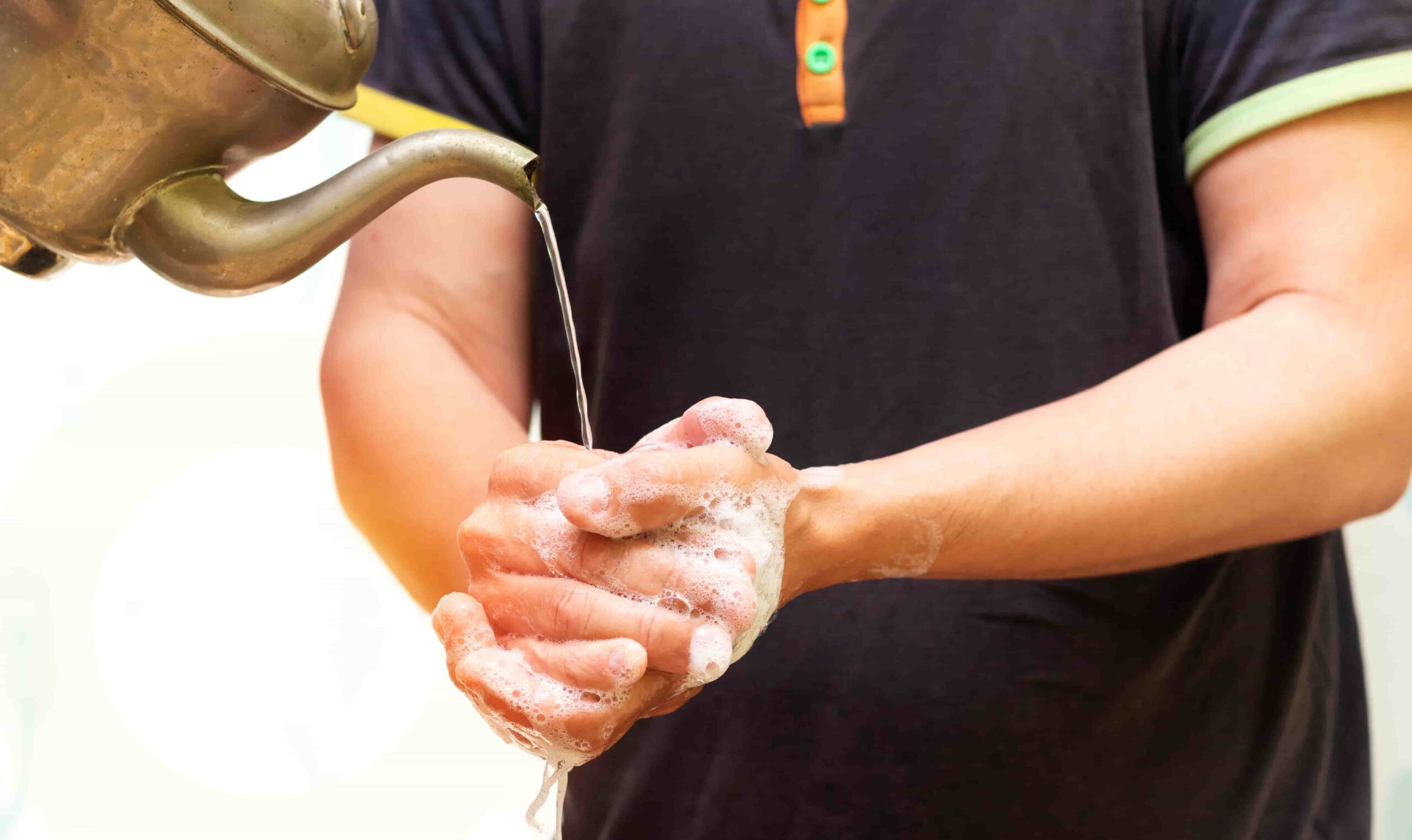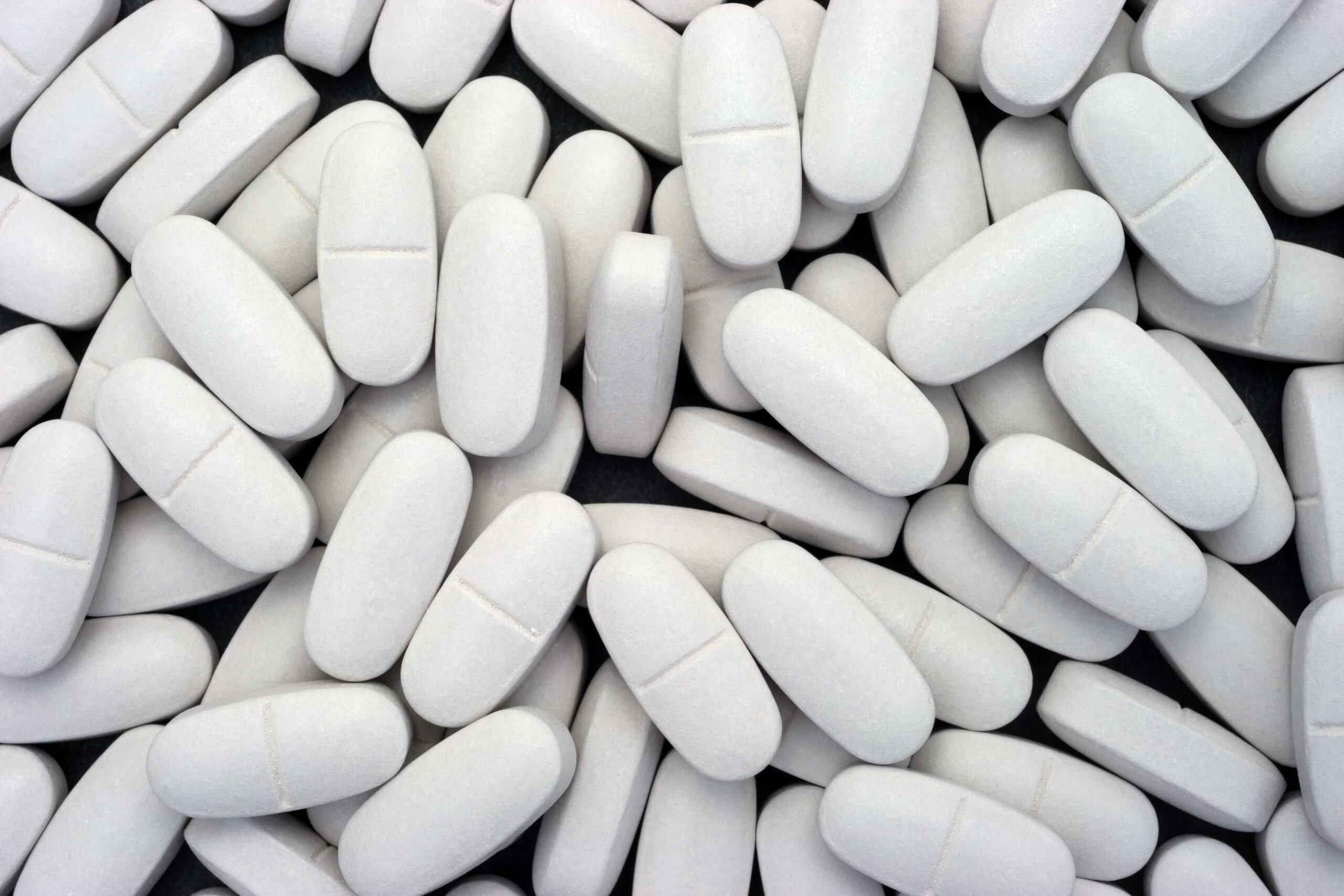Copper as an antimicrobial agent
Copper has long been known to have medicinal properties, but only in recent times has it been properly established as an antimicrobial agent.
Following extensive testing, copper became the first metal to be registered by the US Environmental Protection Agency (EPA) as an antimicrobial material in 2008.
Recent research confirms anecdotal evidence that stretches back centuries and is now paving the way for the use of antimicrobial copper in a wide range of industries.
Continue reading to learn more about copper’s antimicrobial properties or navigate to a specific section of the article using the links below.
Copper an antimicrobial agent
Find out why copper is antimicrobial and learn about its levels of resistance to specific types of bacteria, viruses and fungi.
Read MoreUses of antimicrobial copper
Read up on the historic uses of antimicrobial copper and find out how the material continues to drive innovation in the present day.
Read MoreAntimicrobial copper in plumbing
Explore the role of antimicrobial copper in keeping drinking water safe amid a rise in the use of toxic plastic piping.
Read MoreCopper as an antimicrobial agent
The use of copper as an antimicrobial agent dates all the way back to ancient times, long before a proper understanding of viruses and bacteria began to take shape in the late nineteenth century.
Today, we know that copper and its alloys are some of the most effective antimicrobial agents around, with many common types of bacteria, viruses and fungi starting to break down shortly after coming into contact with copper surfaces and coatings.

Why is copper antimicrobial?
Copper’s antimicrobial properties are still under active investigation, with there being evidence to support several theories. In most cases, the antimicrobial effects are attributed to the release of ions that cause the microbe’s cell wall to break down.
This theory argues that copper dissolves from the surface upon contact with the microbe, releasing oxidising ions that pull electrons from the atoms that make up the microbe’s cell wall and killing it generally within a few hours.
While research into copper’s antimicrobial effects remains ongoing, we do know that the red metal is one of the most effective antimicrobial surfaces around, with silver being the only solid material with comparable properties.
Copper’s resistance to bacteria
Copper and its alloys have been found to be incredibly effective in killing a wide range of bacteria, including E. coli, salmonella and MRSA, with many strains breaking down within just a few hours of contact with the metal.
Along with common causes of bacterial infection, copper also inhibits the growth of mycobacterium tuberculosis – widely regarded as the world’s most deadly human pathogen – and offers, at present, better resistance than any other antimicrobial surface.
In most cases, copper’s antibacterial properties only need a few hours to take effect, with the EPA stating that its approved copper alloy surfaces kill more than 99.9% of bacteria within two hours.
| Bacteria | Illnesses | Inactivation time |
| E. coli | Pneumonia, meningitis, urinary tract infection | 65 minutes |
| Salmonella | Fever, stomach pain, typhoid | 4 hours |
| MRSA | Cellulitis, pneumonia | 3 hours |
| Clostridium difficile | Colitis, stomach pain | 30 minutes |
| Mycobacterium tuberculosis | Tuberculosis | 5–15 days |
| Listeria | Sepsis, fever, meningitis | 1 hour |
| Campylobacter | Fever, stomach pain, arthritis | 8 hours |
| Klebsiella pneumoniae | Pneumonia, meningitis, urinary tract infections | 1 hour |
| Staphylococcus warneri | Sepsis, meningitis, urinary tract infection | A few minutes |
Copper’s resistance to viruses
Most research into the antiviral properties of copper has focused on influenza and COVID-19, with the red metal found to be highly effective in killing both strains.
Influenza A, the most common type of influenza virus, is mostly killed within five hours of contact with copper, which is considerably faster than other surfaces made of plastic and stainless steel, where the virus can last days at a time.
Copper coatings have also been established as an effective defence against the spread of COVID-19, with studies showing that SARS-CoV-2 lasts only four hours on the metal, compared to 24 hours on cardboard and up to three days on plastic and stainless steel.
| Bacteria | Illnesses | Inactivation time |
| Influenza A | Flu | 5 hours |
| SARS-CoV | Covid-19 | 8 hours |
| SARS-CoV-2 | Covid-19 | 4 hours |
| Human coronavirus | Flu, fever, pneumonia | 20 minutes |
| Norovirus | Vomiting, stomach pain | 30 minutes |
Copper’s resistance to fungi
Fungi generally last longer on copper surfaces than bacteria and viruses, however the red metal still has impressive antifungal properties that are stronger than most other solid materials.
Candida albicans, penicillium chrysogenum and the fusarium genus – some of the most common causes of fungal infections in humans – generally break down within 24 hours of contact with copper.
The metal is also capable of killing aspergillus fungi, the genus associated with the deadliest fungal diseases in humans, though it can several days or weeks for the fungi to completely die out.
| Bacteria | Illnesses | Inactivation time |
| Aspergillus flavus | Aspergillosis, sinus infection, fever, keratitis | 5 days |
| Aspergillus fumigatus | Aspergillosis, sinus infection | >5 days |
| Aspergillus niger | Aspergillosis, pneumonia | >24 hours |
| Fusarium solani | Keratitis, onychomycosis, eumycetoma | 24 hours |
| Fusarium oxysporum | Keratitis, onychomycosis | 24 hours |
| Fusarium culmonium | Keratitis, onychomycosis | 24 hours |
| Penicillium chrysogenum | Asthma, keratitis, endophthalmitis | 24 hours |
| Candida albicans | Oral thrush, genital yeast infection, urinary yeast infection | 24 hours |
Learn more about the unique properties of copper below
Uses of antimicrobial copper
Copper has long been exploited for its antimicrobial properties and continues to play a key role in disease prevention today, finding use in medicine, water treatment and the manufacture of high-touch surfaces for hospitals, gyms and public transport systems.
Below, we take a closer look at some of the main uses of antimicrobial copper from ancient times through to the present day, while also looking ahead to consider what the future holds for the material.
Historic uses of copper as an antimicrobial agent
The first reference to antimicrobial copper in the historical record comes from the Smith Papyrus, a medical text written in ancient Egypt between 2600 and 2200 B.C. which describes the use of copper to sterilise chest wounds.
Later in 1,500 B.C., the Ebers Papyrus recommends the use of copper compounds for treating headaches, itches and burn wounds, as well as other ailments that scholars have interpreted as boils and epilepsy.
In China, there are records of copper coins being used to alleviate issues with the heart, stomach and bladder as far back as 1,600 B.C, with this popular treatment passed down in teachings from generation to generation.


The medical use of in pre-modern times is a truly global phenomenon: the ancient Greeks used the mineral to treat leg ulcers, doctors from the Roman Empire prescribed it for eye problems, while the Aztecs used copper to cure sore throats.
Copper was also key to early forms of water treatment. Ayurveda, a natural system of medicine originating in India over 3,000 years ago, has long recognised the benefits of storing drinking water in copper vessels as a means of keeping the contents sterile.
The ancient Egyptians also had a grasp of this knowledge, with the Smith Papyrus and several other texts describing copper as an effective purification agent for sterilising drinking water.
Current uses of copper as an antimicrobial agent
As our understanding of germs and infectious disease has developed, the use of copper as an antimicrobial agent has expanded to focus not only on treatment but also prevention.
Antimicrobial copper surfaces are now being adopted across a range of settings, helping to prevent the spread of harmful bacteria and viruses, while copper is also of interest to the medical field and water industry.
Hospitals
Healthcare settings have long been the main area of focus for using antimicrobial copper surfaces, particularly in hospitals and long-term care units, where the risks of microbial contamination are high.
In England alone, it’s estimated that 300,000 patients contract a healthcare-associated infection (HAIs) every year, costing the NHS more than £1 billion annually. Many of these infections stem from germs on unclean surfaces that are passed on through person-to-person contact.
Copper offers fast-acting resistance against many of the most common causes of HAIs, including MRSA and clostridium difficile, making it an excellent option for high-touch surfaces in healthcare settings.
Work is ongoing to leverage the antimicrobial benefits of copper in medical environments, with the material increasingly used to coat bed frames, doorknobs, bedside tables, call buttons, taps and other high-touch surfaces.
Early evidence suggests the use of antimicrobial copper can greatly reduce the microbial load of high-touch surfaces, with one study finding that the use of copper surfaces reduced the incidence of HAIs by a quarter.

Public transport
Another area in which antimicrobial copper has rapidly garnered interest is public transport, where high densities of people within an enclosed space create an environment that is ripe for the spread of infection.
Concerns over the health risks associated with public transport systems peaked during the COVID-19 pandemic, leading to a series of studies into the potential benefits of using copper coatings on high-touch surfaces.
Results from a trial in Vancouver showed that copper was effective in killing 99.9% of bacteria and viruses on handrails and exit doors in buses, trams and trains within two hours.
Another study from Germany focusing on buses found that the use of copper coatings on commonly touched surfaces led to a 23% decrease in the risk of microbial contamination.

Gym and fitness centres
With awareness of copper’s antimicrobial properties on the rise, fitness centres have also sought to take advantage of the material by incorporating copper coatings into gym equipment and other high-touch surfaces.
Among the most common pathogens lurking in gyms is staphylococcus, a strain of bacteria that copper has been proven to kill within a matter of minutes.
One study into the benefits of using copper alloy grips on dumbbells, barbells and various other equipment found that copper reduced bacterial numbers by 94% compared with traditional grips made of rubber and stainless steel.
An increasing number of fitness facilities around are now investing in apparatus equipped with antimicrobial copper surfaces, one of the most notable examples being Toyota Sports Center in California used by the Los Angeles Kings ice hockey team.

Medicine
As in ancient times, copper continues to play an important role in disease treatment, with the emerging field of nanotechnology driving innovation across the medical field.
In dentistry, copper nanoparticles are already being used to enhance the antimicrobial properties of dental implants and fillings, reducing the risk of decay and infection.
Another area in which copper nanoparticles hold promise is wound healing, with studies showing that dressings containing copper nanoparticles promote angiogenesis and skin regeneration, thereby accelerating the healing process.
Research into the medical applications of copper nanoparticles is still in its early stages, but already there is evidence to suggest they could become a common feature of future medicine.

Water treatment
Copper nanoparticles are also of growing interest to the water industry, with studies underway to harness the red metal’s antimicrobial properties in the treatment of sewage, wastewater and drinking water.
Many common forms of bacteria and viruses found in wastewater – including norovirus, salmonella and E. coli – break down shortly after contact with copper, making the material a viable option for water treatment.
Alongside silver, copper is already used widely in hospitals to purify water contaminated with Legionella, with the process of copper-silver ionisation providing a more natural alternative to harsh chemical disinfectants.
Elsewhere, copper-silver ionisation is helping leisure facilities reduce their dependence on chlorine for disinfecting swimming pools and hot tubs, a move which lowers the occupant’s risk of exposure to harmful disinfection byproducts.

Learn more about the varied uses of copper below
Antimicrobial copper in plumbing
Copper’s antimicrobial properties make the material especially suitable for plumbing, where it is vital that drinking water and other contents carried by pipes are kept sterile on the journey to the end user.
The use of copper pipes dates back thousands of years, with the red metal still among the most popular materials today, though in recent decades it has faced increasing competition from plastic.
History of copper plumbing
The earliest examples of copper pipes come from ancient Egypt, a civilisation well acquainted with the material’s antimicrobial properties. In 1994, archaeologists unearthed a sophisticated copper drainage system in a 4,500-year-old pyramid.
There are also records of copper pipes being used in China during the Ming dynasty to supply water to the Wumaio Sluice in Nanjing, helping to control the water level of the Yangtze River that runs through the city.
The rise of modern plumbing in the 19th and early 20th centuries led to increased demand for copper pipes, with the material used alongside other metals like iron and lead to service taps, toilets and showers.


Concerns over lead poisoning in the 1960s eventually led to the banning of lead pipes in the UK in 1969, further solidifying copper’s position as the material of choice for modern plumbing systems.
Along with plumbing, copper pipes also began to be used in gas and central heating systems, with the red metal’s mechanical strength and corrosion resistance making it a great option for transporting hot water, gases and other fluids.
The material continues to be used today in many new-build and retrofit projects, responding to the increased demand for sustainable, long-lasting materials that can be recycled without any loss of quality.
Learn more about the history of copper plumbing below
The threat of microplastics
Another beneficiary of the banning of lead pipes was plastic, a material that emerged as a viable piping material in the 1950s and 1960s. Cheap and easy to install, plastic pipes have since come to rival their metal counterparts.
Unlike copper pipes, which have a proven track record of usage, plastic pipes have a much smaller sample size from which to judge their safety and performance – however, a few warning signs have already come to light.
Among other serious doubts over the fire safety of plastic pipes, commonly used materials like PEX and PVC have been found to leach hazardous microplastics into drinking water when they crack and peel, a result of natural wear and tear.


Microplastics are linked to a range of health issues. Once they enter the body and reach the gut, they can spread to the lungs, brain and reproductive system via the bloodstream.
In 2017, a research team analysed tap water samples from more than a dozen countries, extrapolating the results to estimate that 83% of the world’s tap water was contaminated with microplastics.
A separate piece of research from 2019, which cross-examined tap water samples from more than 25 studies, concluded people who drink tap water ingest around 4,000 plastic particles per year.
As the last line of supply, plastic pipes provide a direct route for microplastics to enter the body by contaminating drinking water right before it is consumed.
Learn more about the dangers of microplastics below
The copper solution
Many piping materials have come and gone, replaced by superior materials or swiftly removed after public health emergencies, however copper has stood the test of time – and with good reason.
The metal offers natural resistance to many common causes of waterborne disease, including E. Coli, salmonella and norovirus, all of which it inactivates within a few hours.
Plastic, on the other hand, offers no natural protection against harmful pathogens, and also carries the risk of leaching its own contaminants into the water supply, further increasing the potential toxicity of the water.


Owing to its microbial resistance, copper is fitted as standard in medical gas systems that carry oxygen and other essential gases to patients.
However, with water pipes, there has been less focus on the potential toxicity of different materials.
Growing awareness of the health risks associated with plastics is now pushing the construction industry to question its long-standing reliance on plastics, with copper offering a ready-made alternative to plastic in plumbing.
Learn more about the benefits of copper over plastic below
Copper: the germ-killing metal
Copper’s natural resistance to viruses, bacteria and fungi is just one of many properties that make it a truly unique and valuable asset.
The use of antimicrobial touch surfaces is now helping reduce disease transmission in hospitals and public transport systems, while copper nanoparticles hold great potential for the medicine and water treatment industries
In plumbing and construction, copper pipes offer greater protection than plastic pipes – along with other commonly used metals – against the threat of contamination, making them the gold standard for safety.
Want to learn more about the role of copper in shaping a safer, more sustainable future? Check out some of our other news items or subscribe to our newsletter!
Frequently asked questions
Is copper antibacterial?
Yes, copper has long been used to fight viruses and bacteria, but only in recent decades have these unique properties been proven by scientists. In 2008, it became the first metal to be registered by the US Environmental Protection Agency as an antimicrobial material.
Does copper kill germs?
Yes, numerous studies have found copper to be effective in killing common types of germs, including bacteria like E. coli, MRSA and salmonella as well as viruses such as influenza, SARS-CoV-2 and norovirus.
What makes copper antimicrobial?
Researchers are yet to confirm the precise workings of copper’s antimicrobial resistance, though most studies point to the release of copper ions upon contact with the microbe, damaging its cellular structure and eventually leading to breakdown.